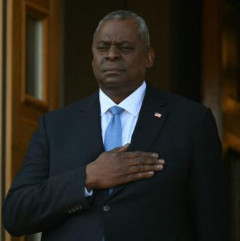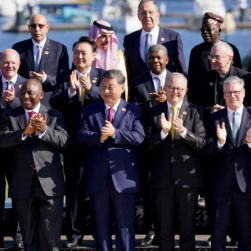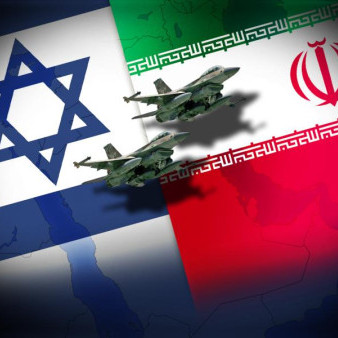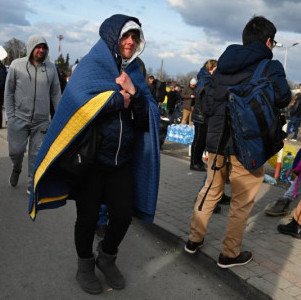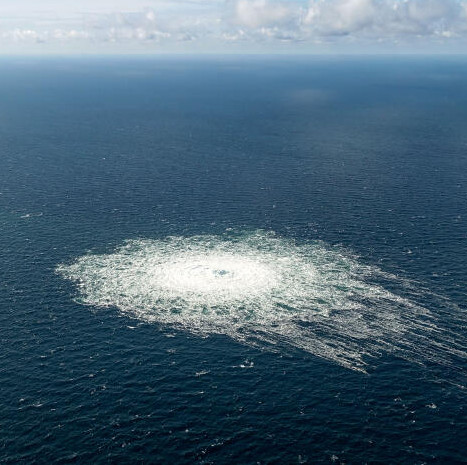The vast expanse of Central and Eastern Europe stretching between the Adriatic, Baltic, and Black Seas has turned into a massive zone of serious competition for the US and Russia.
The “Intermarium”
Most observers missed it, but one of the most immediate post-Brexit geopolitical consequences for the EU was the hosting of the first-ever “Three Seas Initiative” (TSI) summit in the Croatian port city of Dubrovnik in August 2016 that brought together the bloc’s 11 other Central and Eastern European members. The TSI is a Warsaw-led transregional “bloc-within-a-bloc” that represents the modern-day manifestation of Polish interwar strongman Józef Piłsudski’s vision for the “Intermarium”, which he conceived of as being a collection of states between Germany and Russia that were intended to form a so-called “cordon sanitaire”.
This organization is more than just a symbolic ego boost for the Polish elite but forms the basis for one of the most serious strategic threats that Russia will face along its western flank in the coming years if all 12 countries comprehensively deepen their integration with one another and function as an American “firewall” for preventing a Russian-German rapprochement. It should be remembered that Trump visited Warsaw in July 2017 during the TSI’s second summit and even delivered a keynote speech at the event where he spoke very highly about this organization and lauded its promising prospects, thereby bestowing the US’ formal support for the incipient creation of this new power center in Europe.
Although it still has a way to go before its reform-minded countries are capable of effectively challenging Germany’s dominance of the continent and getting the EU to decentralize into a collection of sovereignty-focused nation states, the TSI shouldn’t be ignored by Russian analysts because its “New Europe” members have received the US’ blessing to replace “Old Europe” in the economic, energy, military, political, and ultimately strategic spheres of American policy towards Western Eurasia. It’s with this long-term threat in mind that Russia has begun to counter the US’ moves in this massive space.
From One To Three
Before explaining the Russian-American competition for influence in the “Three Seas” region, one needs to recognize that this “bloc-within-a-bloc” is actually three in one and comprises internal spheres of influence that can be described as the “Neo-Commonwealth” of Poland and the Baltic States; the “Neo-Austro-Hungarian Empire” of Austria, Hungary, Croatia, and Slovenia; and the “Black Sea Bloc” of Romania and Bulgaria. The “Neo-Czechoslovakia” of those two eponymous states straddles the “Neo-Commonwealth” and the “Neo-Austro-Hungarian Empire”, not clearly being within the sphere of influence of either given their membership in the Visegrad Group that counts Poland and Hungary as the leaders of the aforementioned blocs.
Looked at another way, the TSI is really just about integrating several historic sub-blocs within Central and Eastern Europe so that they could all more successfully lobby the EU’s much larger and powerful organizational leaders in order to promote their respective national interests, which for the most part overlap with one another when it comes to “domestic” EU politics such as responding to the Migrant Crisis in particular and strengthening national sovereignty more generally. Nevertheless, it’s their “extra-bloc” policies vis-à-vis energy security and military affairs where the TSI’s members diverge with one another and which has accordingly allowed the US and Russia to stake out their own spheres of influence within this organization.
Bloc-By-Bloc Breakdown
The “Neo-Commonwealth” despises Russia for historical reasons and is therefore strongly in favor of an enhanced NATO military presence on its eastern neighbor’s borders. In addition, its members have fallen for the American-influenced infowar narrative that the Russian-German Nord Stream pipelines represent a “21st-Century Molotov-Ribbentrop Pact”, preferring to pay for costlier LNG from halfway across the world in the US than rely on cheaper gas from nearby Russia. This state of affairs places the northern four members of the TSI – and especially its largest and most influential Polish member – solidly in the American camp.
The “Neo-Austro-Hungarian Empire”, however, is much more pragmatic towards Russia, with President Putin having even visited Budapest, Ljubljana, and soon Vienna in spite of the New Cold War tensions that came to the fore of European geopolitics ever since the 2014 spree of US-backed urban terrorism commonly referred to as “EuroMaidan” succeeded in overthrowing the Ukrainian government. The Russian leader was also recently invited to visit Zagreb too, and his country is currently in the middle of a fast-moving rapprochement with Croatia. This southwestern quarter of the TSI can therefore be said to be Russian-friendly.
When it comes to the “Black Sea Bloc”, however, only one of its two members shows any signs of interest in pragmatic relations with Russia, and that’s Moscow’s civilizational cousins in Bulgaria which recently invited President Putin to visit the country and also said that they’d like to revive the failed South Stream pipeline project through a new one tentatively called “Bulgarian Stream”. Romania, meanwhile, has always harbored distrust towards Russia for similar historical reasons as the four northern TSI members and specifically related to Moldova, so it can be considered very pro-American while Bulgaria is by comparison Russian-friendly just like the countries of the “Neo-Austro-Hungarian Empire”.
Concerning “Neo-Czechoslovakia”, neither of these two states is important enough to warrant any serious Russian-American rivalry, though their shift in favor of one or the other would certainly be appreciated by either Great Power, especially Moscow because it could help “balance” out its country-by-country influence in the bloc with Washington’s. In any case, despite being strategically located between two blocs and somewhat both an object of friendly competition between them but simultaneously a unifying bond as well (given their shared Visegrad Group membership), their landlocked geographies and comparatively small sizes make them less likely to be “fought over” than the other 10 states.
Influence Isn’t What It Used To Be
This observation draws attention to the larger point of how the nature of influence itself has changed from the Old Cold War into the New Cold War, with military alliances and organizational membership being less important to almost half of the TIS’ 11 NATO members and its 12 EU ones than energy ties with Russia and the desire to “multi-align” or “balance” between Moscow, Washington, and Berlin. Interestingly, Russia and the US are also on the “same side” when it comes to the TSI’s “domestic” objective of strengthening their sovereignty and decentralizing the EU, though they of course differ over its “extra-bloc” approach towards energy and military affairs.
All told, the Russian-American competition for influence in the EU’s “Three Seas” region is underway and has already produced impressive gains for both Great Powers, though the end result is that their respective achievements run the risk of fracturing the bloc along anti-Russian and Russian-friendly fault lines. This works against American interests because the US would like to see the creation of a formidable “cordon sanitaire” against Moscow, though this division in and of itself is obviously advantageous for Russia because it greatly assists the country in breaking through the American “firewall” that’s designed to “contain” its influence from Europe in the New Cold War.
DISCLAIMER: The author writes for this publication in a private capacity which is unrepresentative of anyone or any organization except for his own personal views. Nothing written by the author should ever be conflated with the editorial views or official positions of any other media outlet or institution.
